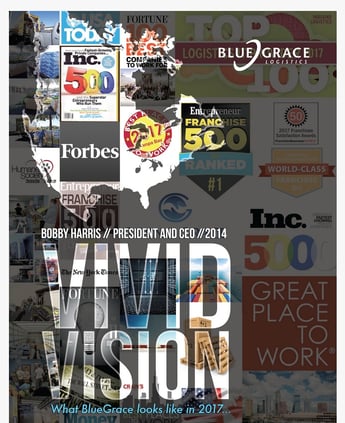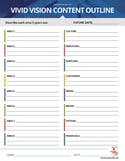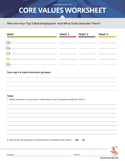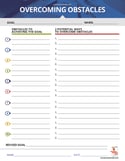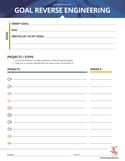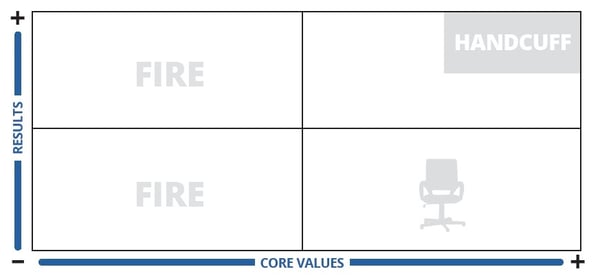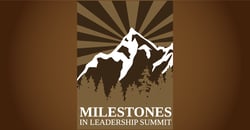 On Friday, May 1st we joined 350+ business owners at the Milestones in Leadership Summit in Huntington Beach. It was a day full of entrepreneurial energy and great insights from our speaker Cameron Herold.
On Friday, May 1st we joined 350+ business owners at the Milestones in Leadership Summit in Huntington Beach. It was a day full of entrepreneurial energy and great insights from our speaker Cameron Herold.
Below are eight takeaways from Cameron’s presentation. If you didn’t make it this year, we hope you can join us next year.
1) Culture is a Decision
Cameron stated the question: Between Google and Microsoft, which one would you like to work for?
Almost all of the room said Google. Why?
Even though both companies are successful technology companies, Google has set itself apart as a company with a great culture.
What made the difference in company culture between Google and Microsoft? Google decided early on what their culture would be.
Culture is a decision. If you have never decided on what that is, it would be safe to say that the color of your culture is beige.
What is the color of your company culture?
If you don’t know already– it is probably beige.
One step you can take to help you on your way to creating an amazing culture is to visit the best companies to work for in your industry and/or geographic area to get ideas. Remember, the key is R&D (rip-off and duplicate).
Cameron also has a good worksheet to help you brainstorm with you team on what you can do to shape your culture.
You can get all his worksheets at his website www.CameronHerold.com. The link to the worksheets is on the top right menu bar. It takes you to a dropbox folder with all his worksheets.
If you have a great culture, you will attract great employees. You need great employees to make your vivid vision a reality. And great culture doesn’t just mean great pay. When Cameron was the COO at 1-800-GOT-JUNK and they were listed as one of the top places to work in Canada, their employee pay was only in the 65% percentile.
2) The Vivid Vision
As a business owner, you have the vision of your company and what it can become in your mind. The problem lies in that your employees do not see that vision in your head.
There needs to be a clearly written description of your vision for your company. It needs to vividly describe every aspect of the company.
To start this, get out of your office, turn off the computer and hand write your vision of all the aspects of your company as you envision it three years out in the future. And write it all in the present tense.
- What are customers saying?
- What is the media saying?
- What comments are your employees making?
- What is your marketing like?
- How is the company running day to day?
- What do your company financials look like?
- How are your core values being lived up to?
- Cover every area of your business (culture, staff, marketing, sales, IT, operations, etc.)
- Lean into the future and dream big.
Once you have completed the first draft, hand it off to a marketer/writer to clean it up and make the text shine. Then get a graphic designer to make it visual and inspiring.
Here are some examples of vivid visions.
Cameron also has a worksheet to help with you with this.
Vivid Vision Outline
Three things to note about your vivid vision.
- You vivid vision will repel some people but it will also serve to attract others. If it’s not repelling certain people you are trying to be all things to all people.
- It will take time, perhaps a long time, until it catches. You just have to keep pushing it. When people see what you can see, you will become a magnet for them.
- Those employees who don’t buy into your vivid vision for your company, will have to be let go.
“Vision without execution is hallucination”
3) Core Values
An important part of your vivid vision are your core values. What are 3-4 short phrases that describe your core values? Are these values important enough to you and your company that you are willing to fire employees if they routinely break them?
Linked here is another worksheet from Cameron with an exercise to help you discover your core values and to describe them.
Understanding and defining your company’s core values is a critical piece of hiring employees that are the right fit for your company.
4) Train Your Employees on Holding Meetings
We all have business meetings. Some are good, some are a waste. So, when was the last time we trained our employees on how to hold effective meetings?
Below is a great framework to make all our meetings more effective.
- Agenda. Every meeting must have an agenda. No agenda, no attenda. The agenda will keep the meeting on topic and helps the participants be ready to participate.
- Purpose. Every meeting needs a clear purpose, stated in one sentence. That should be on included in the agenda.
- Outcomes. Every meeting needs a maximum of three outcomes. This is also on the agenda.
- Start & End. Every meeting should start on time and end five minutes early. Also, whenever possible, book the meeting for 50% of the time you first think it will take.
Ending the meeting five minutes early will provide a buffer so the next meeting or item doesn’t get pushed back. It just lets you do the few quick items we all do between meetings such as checking email, talking with an assistant, taking a restroom break, etc. - Roles. Every meeting needs a chair, a timekeeper, and participants.
- Chair: This person makes sure the meeting stays on topic and ends five minutes early. At the end of the meeting, the chair should ask this question, “Who is doing what and by when?”
- Timekeeper: Keeps an eye on the time and pacing of the meeting so that all topics get covered.
- Participants: These people come prepared and ready to contribute.
- Chair: This person makes sure the meeting stays on topic and ends five minutes early. At the end of the meeting, the chair should ask this question, “Who is doing what and by when?”
5) The Daily Top Five
This productivity tool helps to keep you focused on the most important items that you should be getting done.
At the end of the day, take five minutes and write down the top five things you need to do tomorrow and prioritize them.
At the start of the next day review that list and start on number one. Make your list always visible, such as a post-it note on your monitor. Repeat this everyday to help you focus on the most important tasks.
You can even block out time on your calendar for these items. Do make sure to leave buffer time between these tasks for the inevitable interruptions.
6) S.M.A.R.T. Goals
Cameron shared his version of SMART goals.
Shared. Share your goal in writing with a coach, mentor or team member.
Measureable. Make your goal measureable with a dollar amount, number amount, or percentage amount, so you know when you have achieved it.
Attainable. Make sure it is at least remotely possible.
Relevant. Make sure it is worth your time.
Time Based. When will you do it? Put specific dates on the calendar. Plan the project steps and put milestones in place.
Cameron had two worksheets to help with goal making. One worksheet takes you through a process of listing obstacles that you need to overcome to achieve the goal. Then you list two ways to overcome each obstacle. This exercise helps you see and plan to breakthrough any obstacles to your goal.
The other worksheet will help you to plan out the steps and milestones you need to complete to reach your goal.
7) Email Management
Keep email checking to two 30-minute sessions, one in the mid morning around 11 am and another at 2 pm.
With each email you receive, you have one of the following options:
- Delete it
- Delegate it
- Deal with it now
- Drag it to a folder:
- End of day – you check this folder after 4pm and repeat the process.
- End of week – you check this folder after Thursday.
- Causal reading – you check this folder once or twice a month and delete it all.
You should have an empty inbox at the end of the day. Don’t fall into the trap of working for your email inbox. Make it work for you.
8) Business is Not Difficult; We Make it Hard on Ourselves
Research shows that it costs businesses 15x the annual salary of a bad employee to keep them each year. Get rid of the negative people and those who do not fit into your culture.
Here is an employee rating matrix worksheet from Cameron to help you evaluate your employees.
On the vertical axis, you are measuring results and on the horizontal axis, you are measuring how much they fit in with the company’s core values.
- The employees with low values fit and low results need to be fired.
- The employees with low values fit and high results need to be fired. Even though they are producing results, they are poisoning your company.
- The employees with high values fit and low results need to be re-evaluated to make sure they are in the correct position and/or if more training is needed.
- The employees with high values fit and high results need to be “handcuffed” to the company. You need to figure out what they need to stay with your company for at least the next 3-5 years. It could be flexible hours, increased pay, more responsibility, more recognition, etc.
“How do you get all your people to smile all the time? We just hire smiley people.”
Herb Kelleher Southwest Airlines
Minds Racing
By the end of the day, our minds were racing with new ideas to make our company even better. It was great to see clients and new faces at the Milestones in Leadership Summit. We hope all attendees went home with lots of ideas to further their success.

Hector Olguin is the marketing manager at Milam, Knecht & Warner, LLP. When he is not thinking about marketing, he is planning his next travel adventure with his wife and two rambunctious boys.




